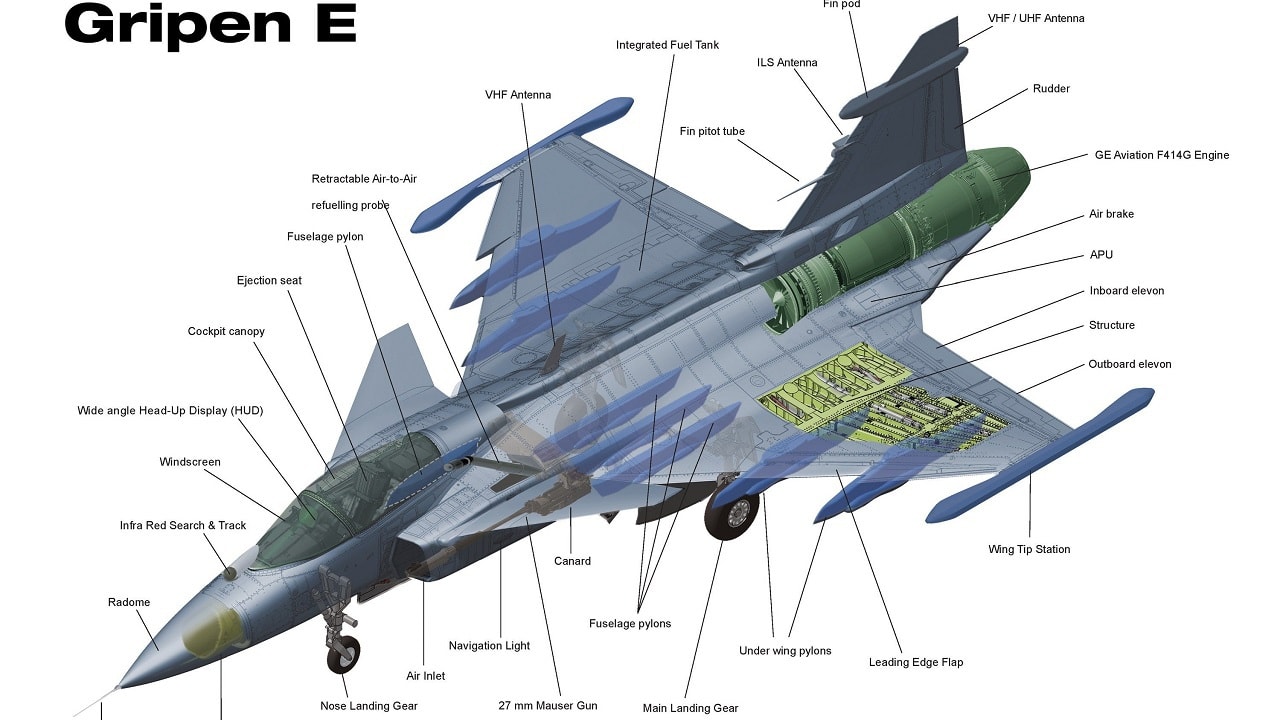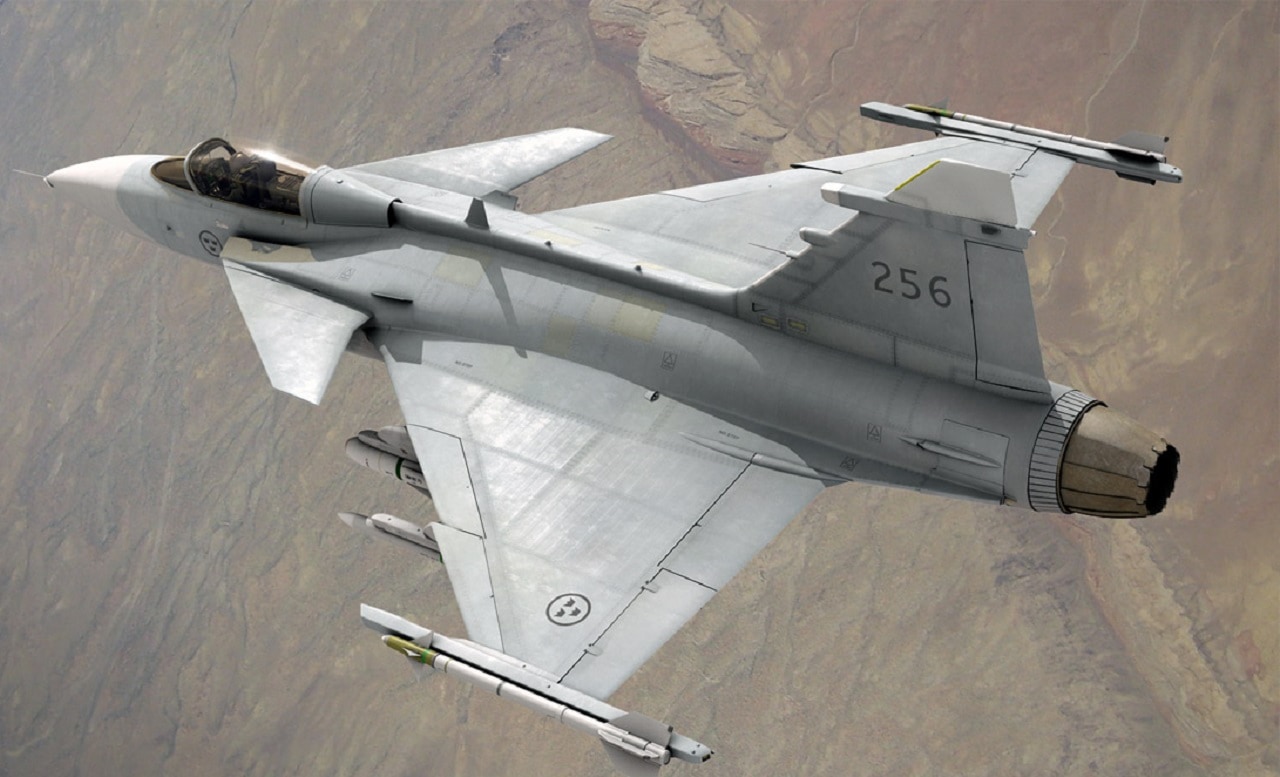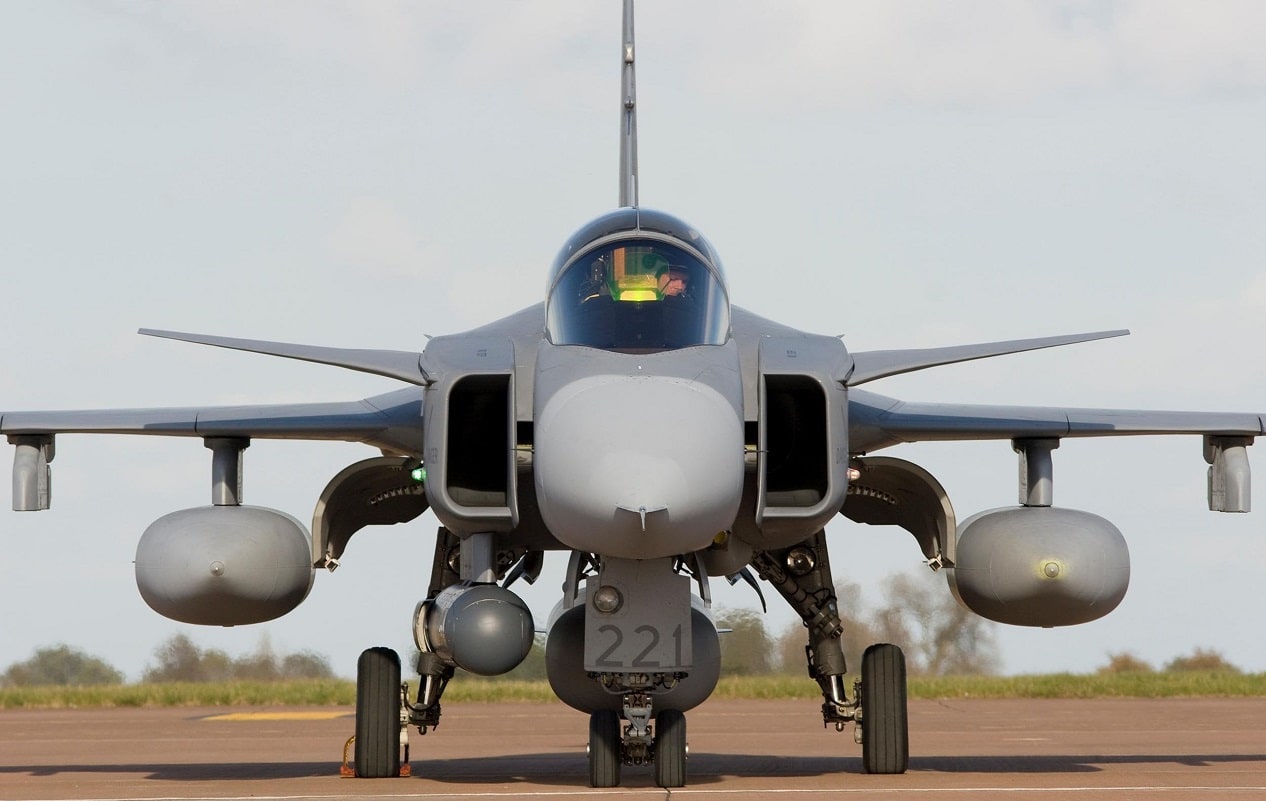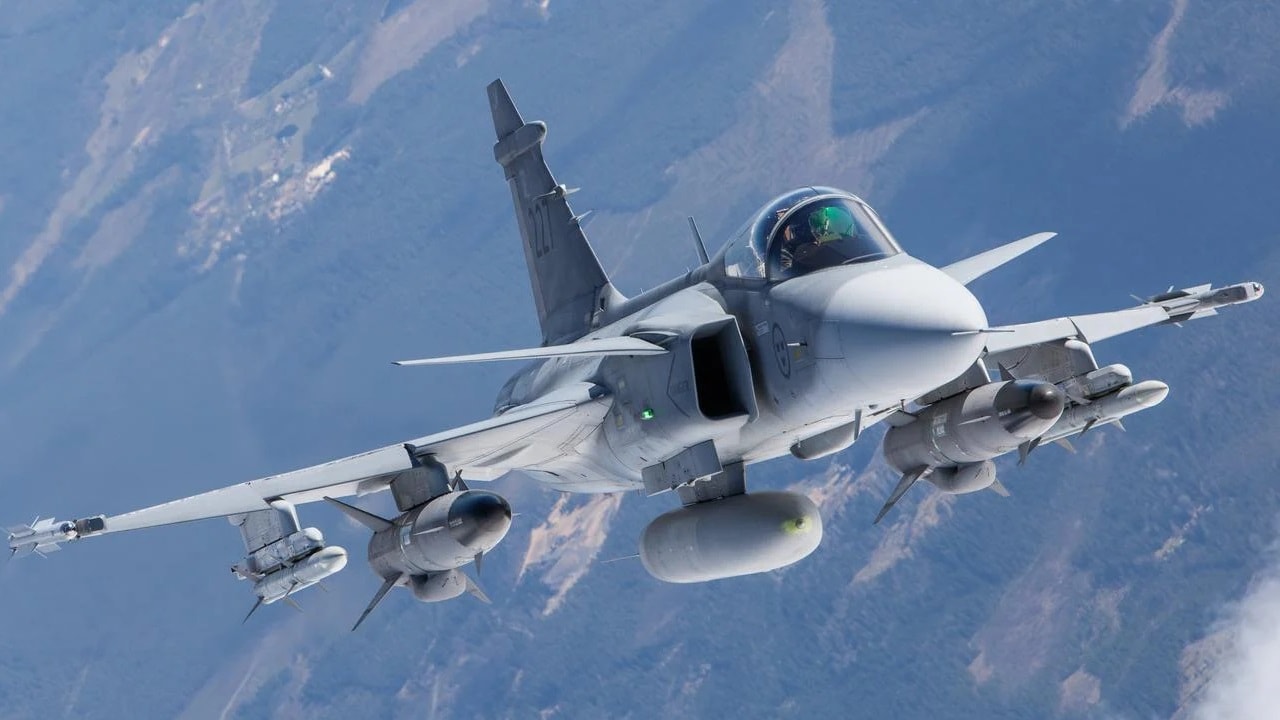Key Points: The Saab JAS 39 Gripen is one of the most advanced fighters currently in service with the Swedish Air Force and is considered by some to be one of the best European fighters.
-It is a versatile, multi-role fighter aircraft developed by the Swedish aerospace company Saab AB and known for its agility, advanced avionics, and cost-effectiveness.

JAS 39 Gripen. Image Credit: Creative Commons.
-However, one area where the Gripen falls short is in stealth technology.
-While some argue that the lack of stealth features renders the Gripen irrelevant, the fighter still boasts a variety of features that make it a valuable tool in the skies.
JAS 39 Gripen Explained
The development of the Gripen goes back to the 1970s when Sweden sought to replace its aging fleet of Saab 35 Draken and Saab 37 Viggen aircraft. The Swedish Air Force required a new fighter that could perform attack and reconnaissance missions, hence the designation “JAS” (Jakt, Attack, Spaning).
The goal was to develop an aircraft that was smaller than the Viggen but could match or exceed its payload and range capabilities.
Saab’s design was selected for development, leading to the creation of the JAS 39 Gripen. The aircraft’s frame design provides excellent maneuverability and stability. The Gripen’s relaxed stability design and fly-by-wire flight controls were cutting-edge at the time, allowing for precise handling and agility.
The Gripen made its maiden flight on December 9, 1988.
However, during its early testing phase, the aircraft experienced two crashes due to issues with its flight control software. These incidents necessitated updates to the software, which were successfully implemented, allowing the Gripen to continue its development.
The JAS 39 Gripen is designed with a delta wing and canard configuration, which contributes to its exceptional maneuverability and stability. This design allows the Gripen to perform agile maneuvers, making it highly effective in dogfights and close-range engagements.

JAS 39. Image Credit: Creative Commons.
The aircraft is equipped with smoothing flight controls, which enhance its responsiveness and ease of handling.
Pros of the Saab JAS 39 Gripen
One of the key strengths of the Gripen is its multirole capability. It can perform a wide range of missions, including air-to-air combat, air-to-ground strikes, reconnaissance, and electronic warfare. The Gripen is equipped with advanced avionics, including radar systems, electronic countermeasures, and data links that enable it to operate effectively in various combat scenarios.
Another unique aspect of the Gripen is its ability to operate from austere airstrips and short runways.
This capability is part of Sweden’s Bas 90 system, which disperses aircraft across remote locations to reduce vulnerability to enemy attacks. The Gripen’s short-field performance and ease of maintenance make it well-suited for operations in challenging environments.
The Gripen is also known for its cost-effectiveness compared to other modern fighter aircraft. The Saab Gripen costs around $85 million per unit. While this may seem like a lot for a single plane, it is more cost-effective than many alternatives in its class, such as the Eurofighter or the Dassault Rafale.

JAS-39 by Sweden. Image Credit: Creative Commons.
Its relatively low acquisition and operating costs make it an attractive option for countries seeking advanced capabilities without the high price tag associated with stealth fighters. This affordability has contributed to the Gripen’s success in the export market, with several countries, including Brazil, South Africa, and Hungary, opting for the aircraft.
The Gripen has undergone several upgrades since its introduction. The latest variant, the JAS 39E/F Gripen, features significant improvements over its predecessors.
These include a more powerful engine, increased payload capacity, enhanced avionics, and a new electronic warfare system. The Gripen E/F also boasts improved radar systems and sensor fusion capabilities, allowing it to detect and engage targets more effectively.
The Biggest Gripen Con: No Stealth?
Stealth technology has revolutionized aerospace engineering by significantly reducing the radar cross-section (RCS) of aircraft, making them harder to detect and track.
Stealth aircraft, such as the F-22 Raptor and F-35 Lightning II, employ a combination of radar-absorbent materials, specialized airframe shaping, and internal weapon bays to achieve low observability. These features allow stealth fighters to penetrate enemy defenses and conduct missions with a higher degree of survivability.
While stealth technology offers undeniable advantages, it also comes with trade-offs. Stealth aircraft typically have limited payload capacity due to the need to carry weapons internally to maintain low observability. This can restrict their versatility in specific mission profiles.
Additionally, stealth technology is expensive to develop and maintain, making stealth fighters significantly more costly than non-stealth counterparts. I don’t want to bash stealth aircraft too much, but every design has its pros and cons.

Sweden’s JAS 39 Fighter. Image: Creative Commons.
Non-stealth aircraft, such as the Gripen, on the other hand, can typically carry a larger payload externally, providing greater flexibility in mission planning. Because stealth technology is so sophisticated, it is also vastly more expensive.
Non-stealth aircraft are much more affordable, allowing countries to field larger fleets and maintain a higher operational tempo. Furthermore, the Gripen’s advanced avionics and electronic warfare capabilities enable it to operate effectively in contested environments, even without the benefit of stealth.
While stealth is a vital feature to have, there is still a vast market for non-stealth aircraft. Many nations around the world continue to operate air forces without stealth fighters, and only three countries in the world are capable of producing them.
Countries will always be seeking affordable strike aircraft, regardless of whether they possess stealth capabilities. So, does stealth render the Saab Gripen obsolete?? It does not. If the Gripen is considered outdated, then the F-16, Dassault Rafale, and F-18 should also be regarded as obsolete.
About the Author: Isaac Seitz
Isaac Seitz, a 19FortyFive Defense Columnist, graduated from Patrick Henry College’s Strategic Intelligence and National Security program. He has also studied Russian at Middlebury Language Schools and has worked as an intelligence Analyst in the private sector.

